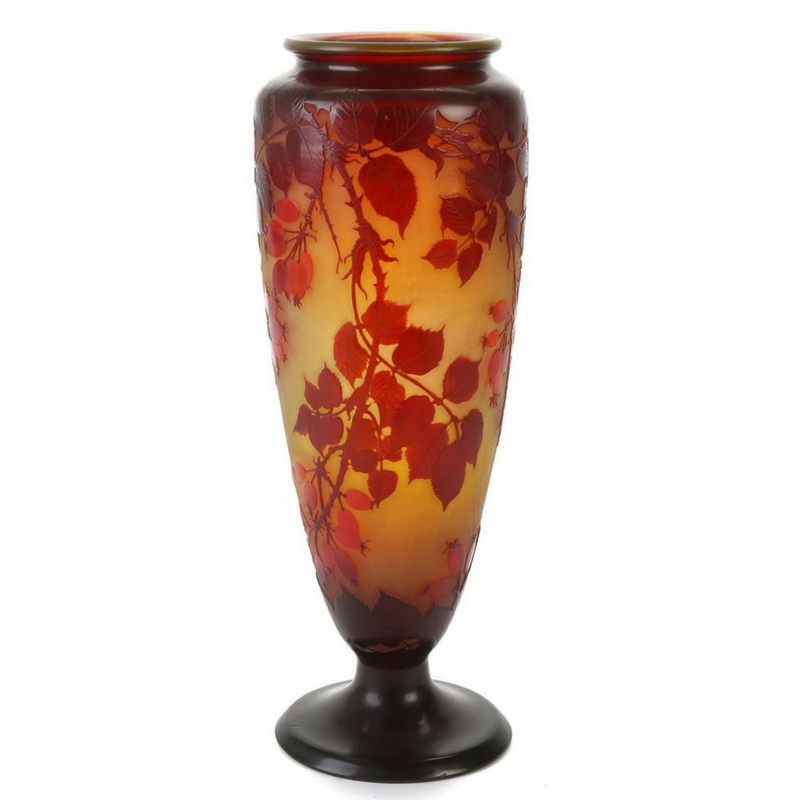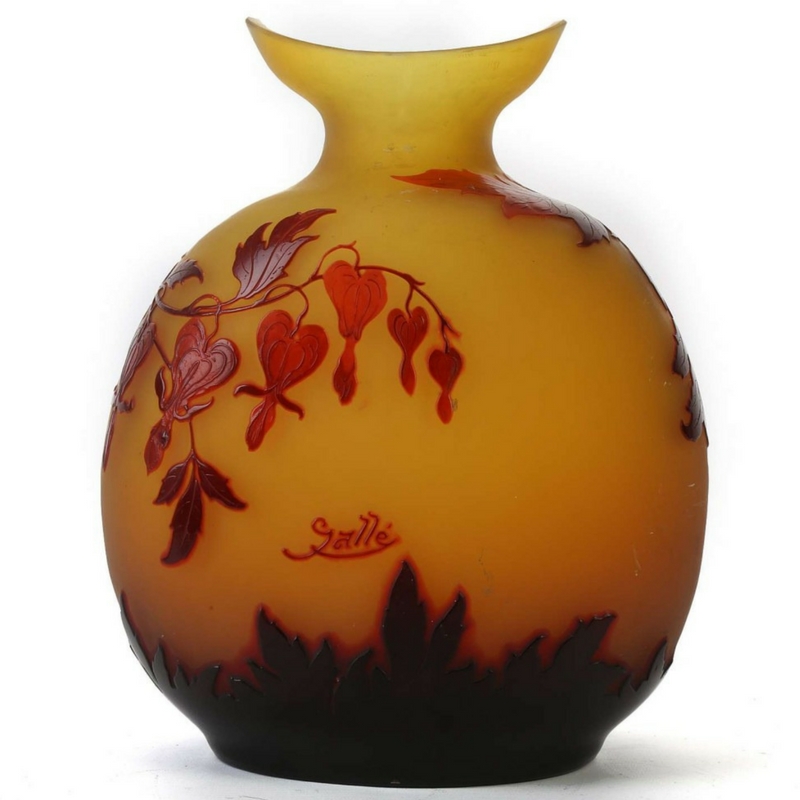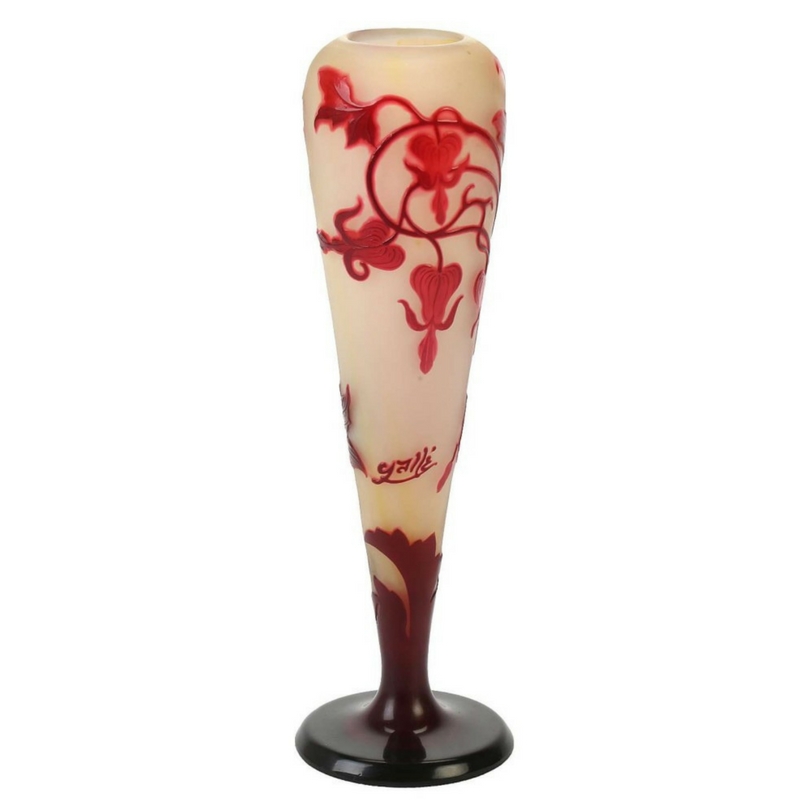Gallé Glass: Art Nouveau Craftsmanship in Colour and Form
Emile Gallé was one of the most influential figures in decorative art at the turn of the 20th century. Born in Nancy, France in 1846, Gallé became synonymous with the Art Nouveau movement and is best known for his richly coloured and nature-inspired glass. His pioneering techniques in cameo glass, marquetry and acid etching helped establish him as the preeminent glassmaker of his time.
Today, Gallé glass continues to resonate with collectors worldwide. It is prized not only for its aesthetic beauty but also for its craftsmanship and technical sophistication. The elegant decoration, use of layered colour, and botanical motifs—featuring everything from aquatic plants to orchids—are what give Gallé pieces their timeless appeal.
Lot 1. Tall cameo glass vase, circa 1900. Estimate: £800 - £1200.
Recognising Authentic Gallé
When considering a purchase, one of the key distinctions is between the rare, hand-finished pieces and the more commercially produced examples made later by Gallé’s factory. During Gallé’s lifetime, he was heavily involved in both design and technical production. However, after his death in 1904, the company continued under the direction of Victor Prouvé. While many posthumous works are still collectible, pieces produced before Gallé’s passing, particularly those with more complex or unique decoration, tend to command higher values.
In some posthumous pieces, a small star appears beside the signature to indicate production after Gallé's death. By the mid-1920s, the company introduced mould-blown cameo glass lamps and vases, which are now among the most sought-after forms. The factory finally closed in 1936, making all authentic Gallé works finite and increasingly desirable on the secondary market.

Lot 2. Large cameo glass vase, circa 1900. Estimate: £800 - £1200.
What to Look for When Buying
When evaluating a Gallé piece, several factors influence value:
Design and Shape: Unusual or elegant forms with intricate decoration are more highly prized.
Size: Larger pieces often fetch higher prices but must still be well-proportioned and refined.
Etching Quality: Crisp, detailed etching in high relief shows a level of craftsmanship that distinguishes finer examples.
Condition: Clean surfaces without restoration or chips significantly increase a piece’s desirability.
A common way to spot imitations is by examining the decoration. Authentic Gallé glass has carefully etched, layered surfaces, often with rich colour gradations and a tactile, dimensional quality. In contrast, fakes may have flat decoration and unnaturally smooth or machine-like finishes, especially on the base.

Lot 3. Cameo glass vase, circa 1900. Estimate: £300 - £500.
Caring for Gallé Glass
If you already own a piece of Gallé, preservation is key. Clean it gently with lukewarm soapy water, avoiding abrasive cloths or strong chemicals. For Gallé table lamps, use low-wattage bulbs to prevent heat damage or cracking. These practical steps can help ensure that your glass retains its vibrancy and value over time.
Consigning to 20th Century & Contemporary Design
Gallé glass remains an enduringly popular collecting category and a cornerstone of any Art Nouveau interior. Whether you are new to the market or looking to part with a single vase or a larger collection, our team is always available to offer expert advice and auction estimates.
For a complimentary valuation, or to discuss selling with us, please get in touch: